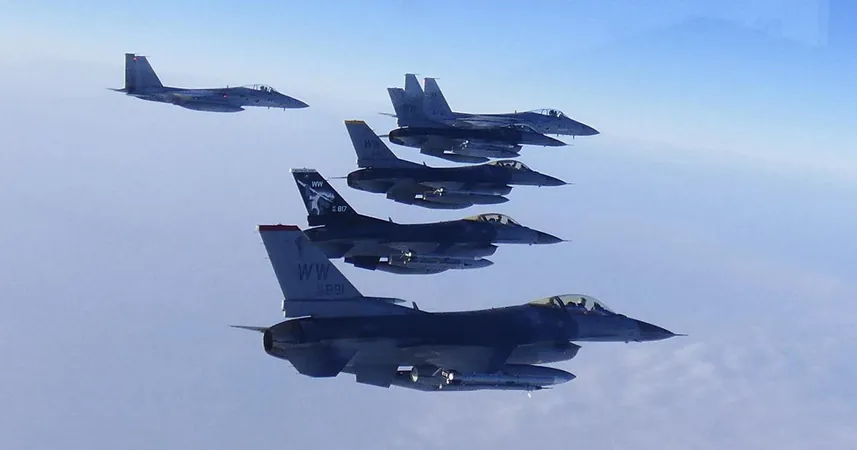
Tensions Rise as Japan Scrambles Fighter Jets to Confront Russian Spy Plane
2024-09-23
Japan Scrambles Fighter Jets Amid Russian Airspace Violation
Japan has taken decisive action against a perceived security threat in its northern airspace, scrambling fighter jets to warn off a Russian reconnaissance aircraft on Monday. The incident involved the Russian Il-38 aircraft breaching Japanese airspace near Rebun Island, just off Hokkaido's coast, for short durations during a five-hour flight, according to Japanese Defense Minister Minoru Kihara.
Heightened Military Activity
This military maneuver comes on the heels of heightened military activity in the region, as a joint fleet of Chinese and Russian warships was spotted navigating around Japan's northern coastline. Kihara indicated that this incursion might be linked to the recent announcement of joint military exercises by Russia and China, raising alarms about cooperative military posturing between the two nations.
Military Response to Airspace Violation
In response to the airspace violation—reported as lasting less than a minute on three different occasions—Japan swiftly deployed an undisclosed number of F-15 and F-35 fighter jets, which resorted to using flares for the first time as a method of warning. This action was taken after the Russian aircraft appeared to ignore initial attempts at communication.
Diplomatic Protests and Future Actions
Kihara expressed Japan’s clear stance by stating, “The airspace violation was extremely regrettable,” and emphasized that Japan has lodged a strong diplomatic protest to Russia, demanding preventive measures against future incursions. He assured the public that Japan will continue to monitor and respond to military activities in the region with vigilance.
Concerns Over Military Cooperation
The use of flares in this context was defended as a legitimate response, with Japan’s defense officials stating that similar measures would be employed without hesitation in the future. This incident underscores the growing concerns in Tokyo about the burgeoning military cooperation between China and Russia, particularly as it pertains to military activities near Japanese territory.
Broader Implications of Military Activity
Moreover, the heightened military presence has broader implications. Earlier this month, Chinese military activities were notably assertive, including a Y-9 reconnaissance aircraft briefly entering Japanese airspace in late August. Additionally, the Chinese aircraft carrier Liaoning, along with two destroyers, was reported close to Japan's waters, raising further alarms in Tokyo.
Territorial Disputes and Tensions
Japan remains deeply entrenched in a territorial dispute with Russia over a group of islands in the Kuril chain, a tension stemming from World War II that continues to obstruct a formal peace treaty between the two nations.
U.S. Military Response
To compound matters, similar military maneuvers have been noted closer to U.S. territory, specifically in Alaska. Earlier in the month, the U.S. military responded to increased Russian presence around the Aleutian Islands, shifting 130 troops along with mobile rocket launchers to an isolated island amidst a surge in military aircraft and vessel activity from both Russia and China.
Conclusion: Rising Regional Tensions
As regional tensions reach a boiling point, it appears that Japan is prepared to ramp up its defense measures, significantly bolstered by evolving military strategies in response to increasingly assertive actions from both Russia and China. The question remains: how far will these nations go in demonstrating their military might so close to Japan’s borders?

 Brasil (PT)
Brasil (PT)
 Canada (EN)
Canada (EN)
 Chile (ES)
Chile (ES)
 España (ES)
España (ES)
 France (FR)
France (FR)
 Hong Kong (EN)
Hong Kong (EN)
 Italia (IT)
Italia (IT)
 日本 (JA)
日本 (JA)
 Magyarország (HU)
Magyarország (HU)
 Norge (NO)
Norge (NO)
 Polska (PL)
Polska (PL)
 Schweiz (DE)
Schweiz (DE)
 Singapore (EN)
Singapore (EN)
 Sverige (SV)
Sverige (SV)
 Suomi (FI)
Suomi (FI)
 Türkiye (TR)
Türkiye (TR)